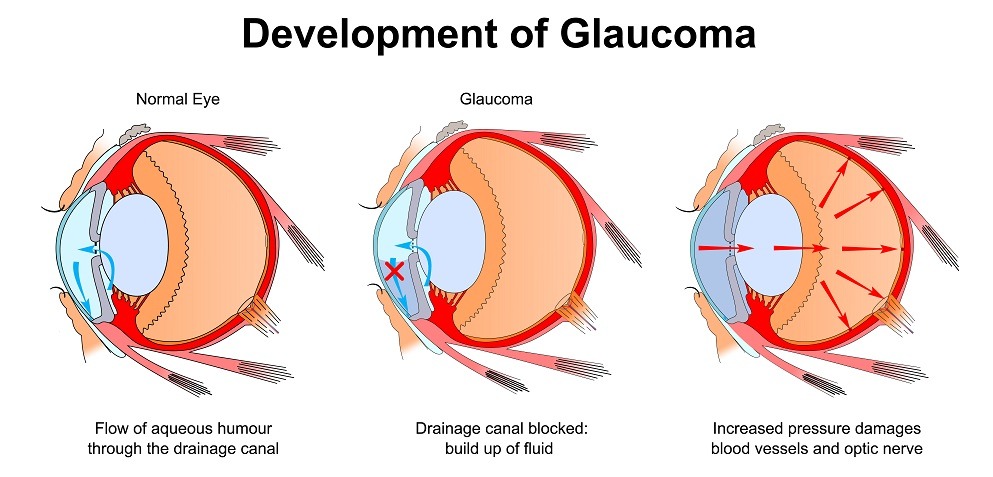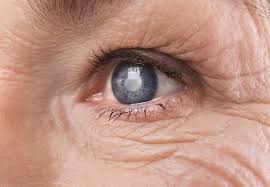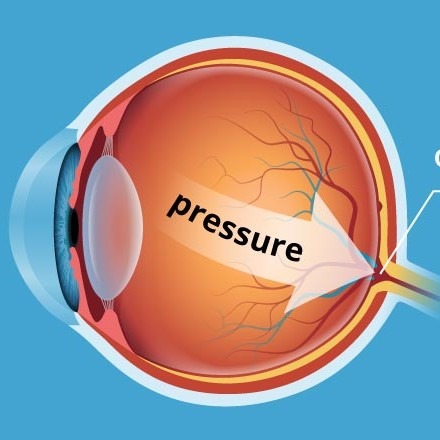Like a thief in the night, glaucoma can rob you of your vision, slowly damaging your eyes and causing irreparable harm. Despite having been around for eons, researchers remain puzzled by what causes glaucoma in most cases. While available treatments can delay vision loss, there is no cure for glaucoma, resulting in the eye condition being a leading cause of blindness globally.
By definition, glaucoma is a group of diseases that damage the optic nerve, a cable at the back of each eye that connects it to the brain. It affects more than 60 million worldwide. While there are various forms of the disease, primary open-angle glaucoma is the most common and most mysterious.

Anyone who has had an air-puff test — otherwise known as tonometry – may also know that glaucoma is linked to an increase in eye pressure, known as intraocular pressure. The eye’s unique anatomy, in combination with other factors, can increase eye pressure, leading to some types of glaucoma.
The front part of the eye, between the cornea — the eye’s front window — and the iris — the colored part of the eye — is filled with a clear fluid. This fluid leaves the eye, entering the blood via a gap at the angle where the cornea and iris meet. This gap is filled with a sponge-like tissue known as the trabecular meshwork which helps to regulate fluid passage. Often, eye infections, injuries or certain medications narrow the gap and compress this spongy tissue, producing a rapid build-up of fluid and eye pressure. This is referred to as angle-closure glaucoma.

Open-angle glaucoma is more common than angle-closure glaucoma. It has a more gradual course and there are no clear signs of blockage within the eye’s drainage system. However, researchers estimate that between 50% and 80% of people with open-angle glaucoma have eye pressure that is higher than average. Others have normal pressure or even low pressure. Conversely, many people have high eye pressure, yet never develop glaucoma.
Elevated intraocular pressure is a leading risk factor for primary open-angle glaucoma. The higher the intraocular pressure, the more likely the person is to develop glaucoma and the more likely it is to progress.
Medications that lower eye pressure are vital for glaucoma treatment. In many instances, a doctor would recommend surgery to increase fluid drainage from the eye. Drugs, surgery, or both approaches together are often successful at slowing the course of open-angle glaucoma. Vision Express has several treatments options.
Pressure-lowering eye drops have also been found to delay the onset of glaucoma in people with high eye pressure. But even with medication or surgery, open-angle glaucoma usually continues to attack the optic nerve and cause gradual vision loss. Vision Express has state of the art equipment to test and evaluate your eye health.

Besides high eye pressure, other risk factors for open-angle glaucoma exist and might provide clues about what causes it. Age, for example, is a clear risk factor. Another example: open-angle glaucoma is rare among Americans under age 50, but affects nearly 8% of Americans over 80.
Long before we grow old and even before we’re born, other factors come into play, including ancestry. Open-angle glaucoma is about five times more common among African-Americans and Mexican-Americans compared to Whites, and has an earlier, more rapid course in African- Americans. Family history also has a strong influence. A person’s risk of developing open-angle glaucoma is about 10 times higher if a parent or sibling has it, and the risk is higher still if an identical twin has it.
As researchers continue to dig deeper into the genetics of open-angle glaucoma, sometimes open-angle glaucoma is passed from parent to child due to defects within a single gene. Eight such genes have been identified so far, and they tend to cause glaucoma with an early onset before age 50. Due to these discoveries, there are now genetic tests that can help people with early-onset glaucoma determine the risk that their children will inherit the disease.

